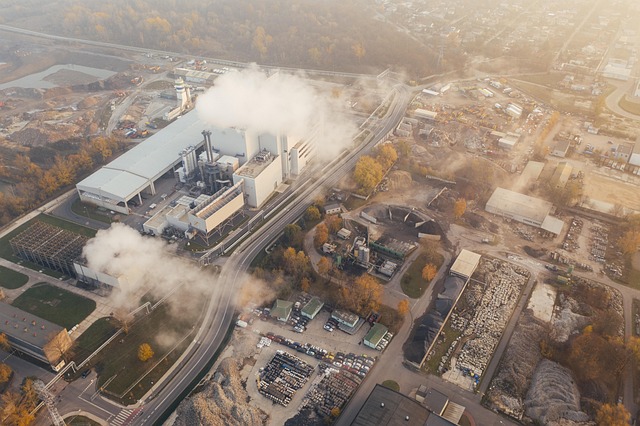Most people think of wildfires as massive walls of flame tearing through forests. But scientists have identified a stranger, less visible type of blaze one that continues burning quietly beneath the ground long after the surface flames are gone. These unusual fires are now widely known as “zombie fires.” The natural question is: what are zombie fires, and why are experts so concerned about them?
This article takes a closer look at how zombie fires form, the science behind them, and why they matter in an era of climate change.

Understanding Zombie Fires
So, what are zombie fires in simple language? They are underground blazes that smolder slowly beneath soil or peat instead of raging openly above ground. They can hold heat through freezing winters and come back to life when warmer weather arrives, sometimes months after the original wildfire seemed extinguished.
In effect, they are the lingering embers of past wildfires, quietly waiting to reignite.
Conditions That Allow Them to Persist
To fully answer what are zombie fires, we need to explore the unique conditions that help them survive:
- Peat deposits: Peat is dense organic matter that traps heat and burns slowly, allowing fires to persist out of sight.
- Cold northern regions: Boreal forests and Arctic landscapes, such as those in Alaska, Canada, and Siberia, are especially prone to zombie fires.
- Warmer-than-usual winters: With rising global temperatures, soil doesn’t freeze as deeply, giving underground fires a chance to endure.
These three factors combine to create the perfect recipe for long-lasting, hidden fires.
Historical Clues
Long before scientists studied them, people living in northern regions told stories of fires that mysteriously reignited after months of silence. These tales, once thought to be folklore, now match what modern satellites and thermal sensors confirm: zombie fires are real, and they’re happening more often.
This growing body of evidence strengthens our understanding of what are zombie fires and why they’re a pressing environmental concern.
Link to Climate Change
The question, what are zombie fires, cannot be separated from global warming. Rising temperatures, shrinking snow cover, and longer dry periods mean more fires smolder underground instead of dying out completely.
The problem doesn’t stop there. As peat-rich soils burn, they release enormous amounts of greenhouse gases like carbon dioxide and methane. These gases heat the planet further, creating a vicious cycle: warming causes more zombie fires, and zombie fires release emissions that drive even more warming.
Ecological Consequences
To truly understand what are zombie fires, we also need to examine their impact:
- Massive greenhouse gas release: Some zombie fires emit carbon comparable to a country’s annual emissions.
- Destruction of fragile ecosystems: Reignited fires can devastate Arctic wildlife and boreal forests.
- Permafrost thaw: Underground fires generate heat that speeds up the thawing of permafrost, releasing vast amounts of trapped carbon back into the atmosphere.
In essence, zombie fires intensify the existing climate challenges the Earth is already struggling with.

How Scientists Monitor Them
Until recently, zombie fires were nearly impossible to detect, since they often burned invisibly beneath snow or soil. Now, researchers rely on satellite imagery, drones, and thermal mapping to locate hidden hotspots.
These tools not only help confirm what are zombie fires, but also allow fire crews to prepare for flare-ups when spring arrives.
Why They’re So Hard to Extinguish
Unlike surface wildfires, zombie fires burn deeply underground. Dumping water on the surface often has little effect, since the heat source lies buried in soil or peat layers.
So, even when we know what are zombie fires, stopping them is another challenge. Solutions often require digging up burning peat, applying specialized suppression techniques, or relying on long periods of heavy rainfall methods that are expensive and difficult to implement.
Risks for People and Communities
Zombie fires often occur in remote regions, but their consequences are widespread. Smoke and fine particles can travel hundreds of miles, affecting air quality and human health. Local communities also face economic damage when forests and lands are destroyed, while thawing permafrost destabilizes infrastructure such as roads and pipelines.
This is why people increasingly ask: what are zombie fires, and how can society prepare for the dangers they bring?

Looking to the Future
Experts warn that zombie fires will likely become more common as climate change intensifies. Each wildfire season leaves behind more smoldering ground, which increases the odds of underground blazes surviving into the next year.
What are zombie fires in the context of tomorrow? They represent a critical warning for the challenges our planet may face in the future.? They are a warning sign evidence that climate change is reshaping natural systems in ways we can no longer ignore.
Final Thoughts
After exploring their causes, effects, and climate connections, the answer to what are zombie fires is clear: they are underground fires that survive through cold seasons, reignite in warmer months, and release huge amounts of greenhouse gases.
Once considered rare, these hidden blazes are now a growing climate threat. They may be invisible beneath the surface, but their impact is felt worldwide. Zombie fires remind us that our planet’s systems are deeply interconnected and that even hidden flames can have global consequences.